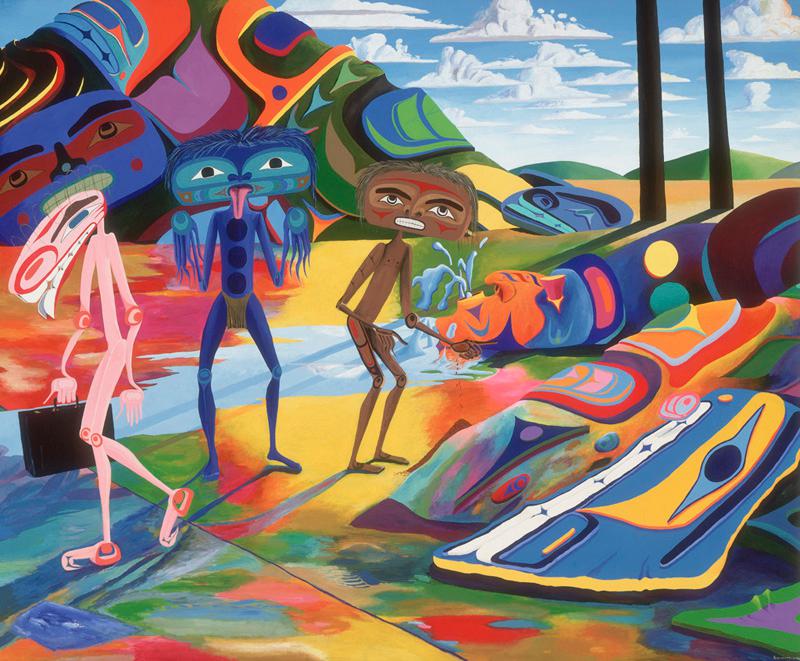Earlier this fall, the British Columbia–based Coast Salish artist Lawrence Paul Yuxweluptun was named a recipient of the prestigious Eiteljorg Contemporary Art Fellowship, an annual $25,000 grant and purchase prize awarded by the Eiteljorg Museum of American Indians and Western Art in Indianapolis, Indiana. It’s a well-earned distinction for Yuxweluptun, whose unapologetically critical art practice over the past three decades has become a touchstone for Indigenous artists both nationally and internationally.
Take, for instance, his performance-based work An Indian Act Shooting the Indian Act, Healey Estate, Northumberland September 14th, 1997—which was an anchor work in this year’s “Sakahàn: International Indigenous Art” exhibition at the National Gallery of Canada. Or consider his hyper-coloured landscape and figurative paintings and abstract ovoid compositions, which re-imagine Northwest Coast First Nations motifs in the visual modes of Surrealist and Modernist art.
In all, Yuxweluptun’s work offers a potent counter-perspective to some mainstream perspectives around First Nations political, social and land rights, all framed by the fundamental visual power of contemporary art. To view a selection of Yuxweluptun’s paintings, including his newest works from a spring 2013 solo exhibition at Macaulay & Co. Fine Art in Vancouver, click on the Photos icon above.
In the cover story of the Winter 2014 issue of Canadian Art, critic and curator Christina Ritchie catches up with Yuxweluptun to unpack the ideas and impetus behind his highly charged painting practice. She finds an artist deeply tied to notions of land use and misuse, one whose deft subversion of “official” art-historical narratives—from the Group of Seven to the Automatistes—holds no punches when it comes to the devastation wrought upon First Nations by the legacy of colonialism. Yet his art ultimately carries hope—if not for cultural recovery, then for spiritual emancipation.
“In Yuxweluptun’s hands,” Ritchie writes, “fulfilling his desire to tell ‘what it feels like to be a Native,’ the forest is active, inhabited by life-giving spirits, always present, continuously transforming. Beyond the politics of Environment Canada, Yuxweluptun adamantly states, ‘there is only one Earth. It is very disheartening to stand in a clear-cut, but you grit your teeth and look at all these things and, you know, I’m still going to pray here.’”
For more insights into Lawrence Paul Yuxweluptun’s groundbreaking art practice, pick up the Winter 2014 issue of Canadian Art, available on newsstands, on the App Store, and on Zinio from December 15, 2013 to March 14, 2014. To get each issue delivered straight to your mailbox, visit canadianart.ca/subscribe.









